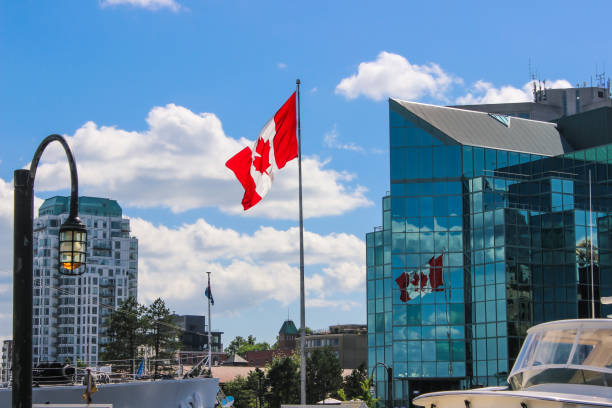Canada is opening its doors wider to foreign workers, and the demand for skilled professionals is at an all-time high. With salaries reaching up to $96,000 USD annually, many immigrants now see Canada as the perfect place to start a better life.
Whether you’re a nurse, IT professional, engineer, or tradesperson, the Canadian immigration and work permit system is designed to attract international talent to fill critical roles. This guide will walk you through the steps, from finding a job with visa sponsorship to legally relocating to Canada and starting a rewarding career.
Why Canada Is Paying Foreign Workers Up to $96,000
Canada is experiencing a significant labor shortage, especially in industries like healthcare, construction, technology, and agriculture. The federal and provincial governments have responded by increasing immigration targets and encouraging employers to hire foreign workers.
Many Canadian employers now offer salaries as high as $96,000 USD for in-demand jobs to attract international talent. In addition, Canada’s focus on multiculturalism, equality, and permanent residency makes it one of the most immigrant-friendly countries in the world.
Jobs in Canada That Can Pay Up to $96,000
Not all jobs start at six-figure salaries, but many roles in high-demand sectors offer excellent pay with benefits, bonuses, and relocation assistance. Some of the best-paying job categories include:
Healthcare:
- Registered Nurses
- General Practitioners
- Physiotherapists
- Medical Technologists
Now Poland Is Paying Foreign Workers Up to $77,000 – Apply Now
Technology:
- Software Developers
- Cloud Engineers
- Cybersecurity Specialists
- AI Experts
Skilled Trades & Construction:
- Electricians
- Plumbers
- Crane Operators
- Carpenters
Finance & Business:
- Accountants
- Financial Analysts
- HR Specialists
Logistics & Transportation:
- Truck Drivers (especially long-haul)
- Fleet Managers
- Warehouse Coordinators
Salaries for these positions typically range from $50,000 to $96,000 depending on location, experience, and industry.
Types of Work Permits Available for Foreign Workers
To legally work in Canada, you’ll need an appropriate work permit. Here are the most common options:
1. Employer-Specific Work Permit:
- Tied to a specific job and employer
- Requires a job offer and, in most cases, a Labour Market Impact Assessment (LMIA)
2. Open Work Permit:
- Not tied to a specific employer
- Often available for spouses of skilled workers or graduates of Canadian institutions
3. International Mobility Program (IMP):
- Allows some categories of workers to bypass LMIA (e.g., intra-company transferees, trade agreements)
4. Global Talent Stream:
- Fast-tracked process for in-demand tech roles
- Offers work permit processing in as little as 2 weeks
Step-by-Step Process to Apply for a Canadian Work Permit
Step 1: Find a Job with Visa Sponsorship Start by applying to companies known to hire foreign workers. Focus on large companies, healthcare networks, and logistics firms.
Step 2: Secure a Job Offer and LMIA (if required) The employer applies for an LMIA from Employment and Social Development Canada (ESDC) to prove the job cannot be filled locally.
Step 3: Apply for the Work Permit Once you receive a positive LMIA and job offer, you can apply for a work permit through the Immigration, Refugees and Citizenship Canada (IRCC) portal.
Step 4: Submit Documents Typical documents include:
- Valid passport
- Job offer letter
- LMIA approval (if needed)
- Proof of qualifications
- Language test scores (if applicable)
- Police clearance
How To Get Paid $59,999 to Relocate to the USA Through the Construction Visa Program – Apply Now!
Step 5: Wait for Approval and Travel to Canada Processing times range from a few weeks to several months. Once approved, you’ll receive your work permit and can make travel arrangements.
What to Expect After Moving to Canada
Once you arrive in Canada:
- Register with a local health provider (health card)
- Open a Canadian bank account
- Apply for a Social Insurance Number (SIN)
- Look for permanent housing
- Join orientation or settlement programs for newcomers
Cost of Living in Canada
Here’s a general breakdown of living expenses in Canada (monthly, USD):
| Expense | Average Cost |
|---|---|
| Rent (1BR in city) | $900 – $1,800 |
| Food and groceries | $300 – $500 |
| Utilities & Internet | $150 – $200 |
| Transportation | $80 – $120 |
| Health insurance (if private) | $100 – $150 |
With a salary of $96,000, you’ll have a comfortable lifestyle in most Canadian cities.
Benefits of Working in Canada
- Competitive salaries and job security
- Access to public healthcare (in most provinces)
- Free public education for children
- Pathway to permanent residency and citizenship
- Multicultural society and high quality of life
Mistakes to Avoid During the Application Process
- Not checking if the job requires an LMIA
- Submitting incomplete or incorrect documents
- Falling for fake job offers or visa scams
- Ignoring the employer’s job requirements
- Not preparing for the language test when needed
Real Success Stories
Ahmed from Egypt – Software Engineer Ahmed secured a job with a tech firm in Toronto via the Global Talent Stream. Now earning $95,000 per year and plans to apply for PR soon.
Maria from the Philippines – Registered Nurse After applying through a hospital in British Columbia, Maria moved with her family and earns over $90,000. The hospital helped with housing and orientation.
Samuel from Nigeria – Long-haul Truck Driver Sponsored by a transport company in Alberta, Samuel earns $96,000 a year and receives bonuses and travel allowances.
1. Understand the Basics of the Canadian Work Permit System
There are two primary types of work permits in Canada:
-
Employer-Specific Work Permit: Requires a job offer from a Canadian employer. Usually needs an LMIA (Labour Market Impact Assessment).
-
Open Work Permit: Not tied to any employer. Typically for spouses of skilled workers or students and other specific situations.
For most foreign workers relocating for employment, the Employer-Specific Work Permit is the most relevant.
2. Secure a Valid Job Offer
To qualify for a work permit, you must first get a legitimate job offer from a Canadian employer. This job must meet the following criteria:
-
Full-time, non-seasonal work.
-
Employer must be approved by Employment and Social Development Canada (ESDC) and provide an LMIA if required.
-
Clearly stated wages and duties.
You can find jobs on:
-
Sector-specific websites
3. Ensure the Employer Obtains a Positive LMIA (if needed)
A Labour Market Impact Assessment proves there’s no Canadian citizen or permanent resident available to do the job. If required:
-
Your employer applies to ESDC.
-
If approved, you receive a copy of the LMIA and a job offer letter.
Note: Some jobs are LMIA-exempt, such as under international agreements (e.g., CUSMA), or intra-company transfers.
4. Gather Required Documentation
You’ll need the following documents when applying for your work permit:
-
Valid passport (must remain valid through entire stay)
-
Job offer letter
-
Copy of the LMIA and LMIA number (if applicable)
-
Proof of qualifications (certificates, degrees, resume)
-
Proof of relevant work experience
-
Medical examination (for certain jobs/countries)
-
Police clearance certificate
-
Proof of financial support
-
Recent passport photographs
Optional but helpful: Language test scores (IELTS, TEF), especially for future permanent residency.
5. Apply for a Work Permit
You apply through the IRCC (Immigration, Refugees and Citizenship Canada) website or a Visa Application Centre (VAC).
Application Methods:
-
Online: Recommended and faster.
-
Paper: Available if you have difficulty applying online.
Include:
-
Work permit application forms
-
All supporting documents
-
Biometrics (fingerprints and photo)
-
Processing fee (approx. $155 CAD)
6. Biometrics and Visa Interview (if required)
After submitting your application:
-
You’ll receive a Biometrics Instruction Letter (BIL).
-
Visit the nearest VAC or Application Support Center to submit fingerprints and photos.
-
Some applicants may be asked to attend a visa interview.
7. Receive a Decision
If approved, you will receive:
-
A Port of Entry (POE) Letter of Introduction (you do not get a physical work permit yet)
-
Temporary Resident Visa (TRV) if required for your nationality
8. Travel to Canada
Upon arrival:
-
Present your POE Letter, passport, job offer, and any additional requested documents to the CBSA officer at the airport.
-
If approved at the port of entry, you will be issued a physical work permit.
9. After Arrival in Canada
Complete the following within your first weeks:
-
Get a Social Insurance Number (SIN) from Service Canada
-
Register for provincial healthcare
-
Open a Canadian bank account
-
Find permanent housing
-
Learn about tax responsibilities
-
Join newcomer services or settlement programs
10. Plan for Permanent Residency
Most work permits are temporary, but Canada offers clear pathways to permanent residency:
-
Express Entry (CEC, FSW, FST programs)
-
Provincial Nominee Programs (PNPs)
-
Canadian Experience Class
-
Agri-Food Pilot, Atlantic Immigration Program
After working for a year or more, many foreign workers qualify to apply for PR.
Summary Checklist
| Step | Action |
|---|---|
| 1 | Get a job offer |
| 2 | Employer gets LMIA (if needed) |
| 3 | Collect documents |
| 4 | Apply online or via VAC |
| 5 | Attend biometrics/interview |
| 6 | Receive POE Letter |
| 7 | Fly to Canada |
| 8 | Get your work permit at entry |
| 9 | Settle in Canada |
| 10 | Explore PR pathways |
Conclusion
Canada’s job market is ripe with opportunities for skilled foreign professionals. Whether you are looking to improve your career, income, or quality of life, a work permit in Canada is a powerful first step. With salaries as high as $96,000, excellent living standards, and clear pathways to permanent residency, it’s no surprise Canada is one of the world’s most desirable work destinations.









